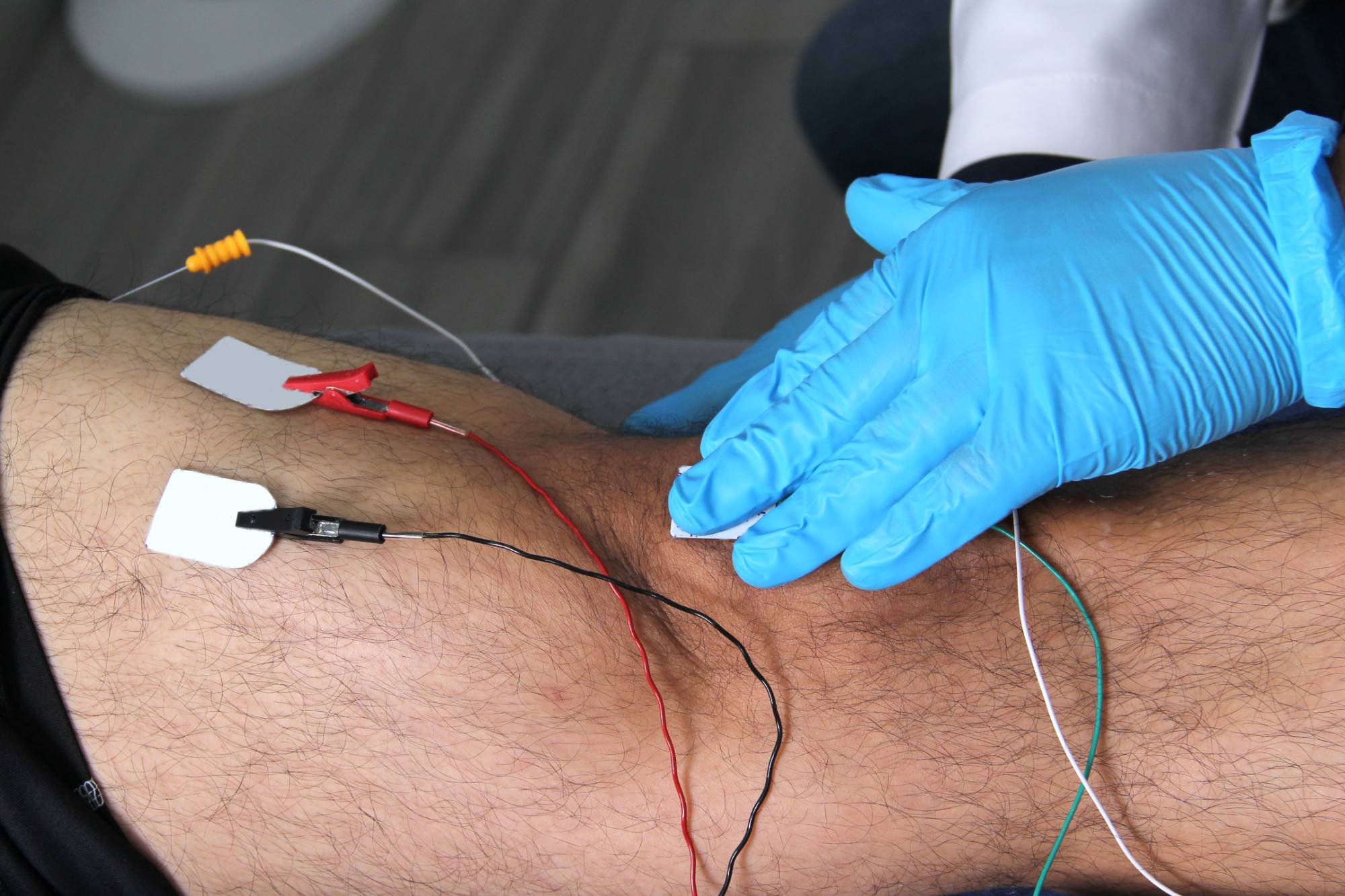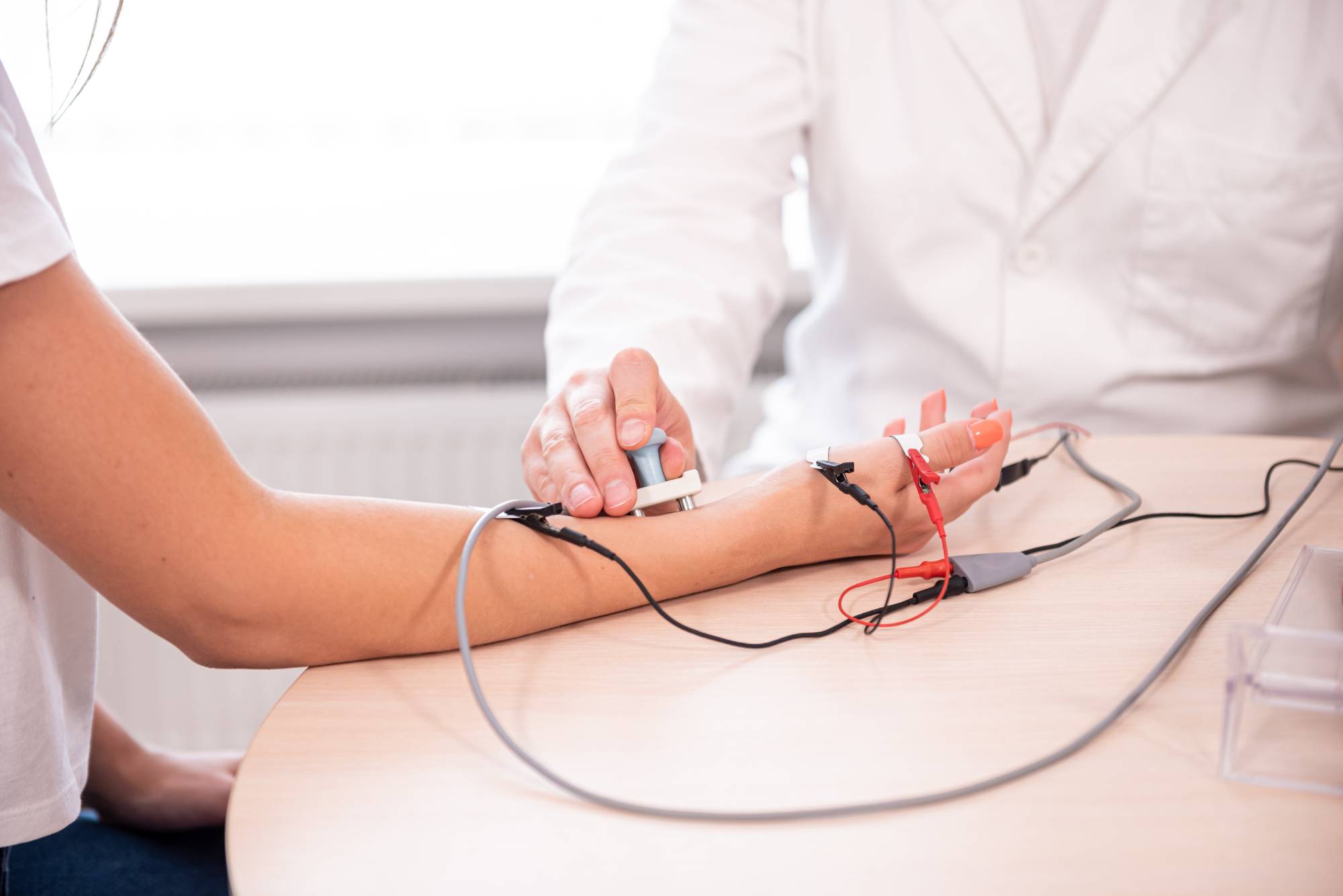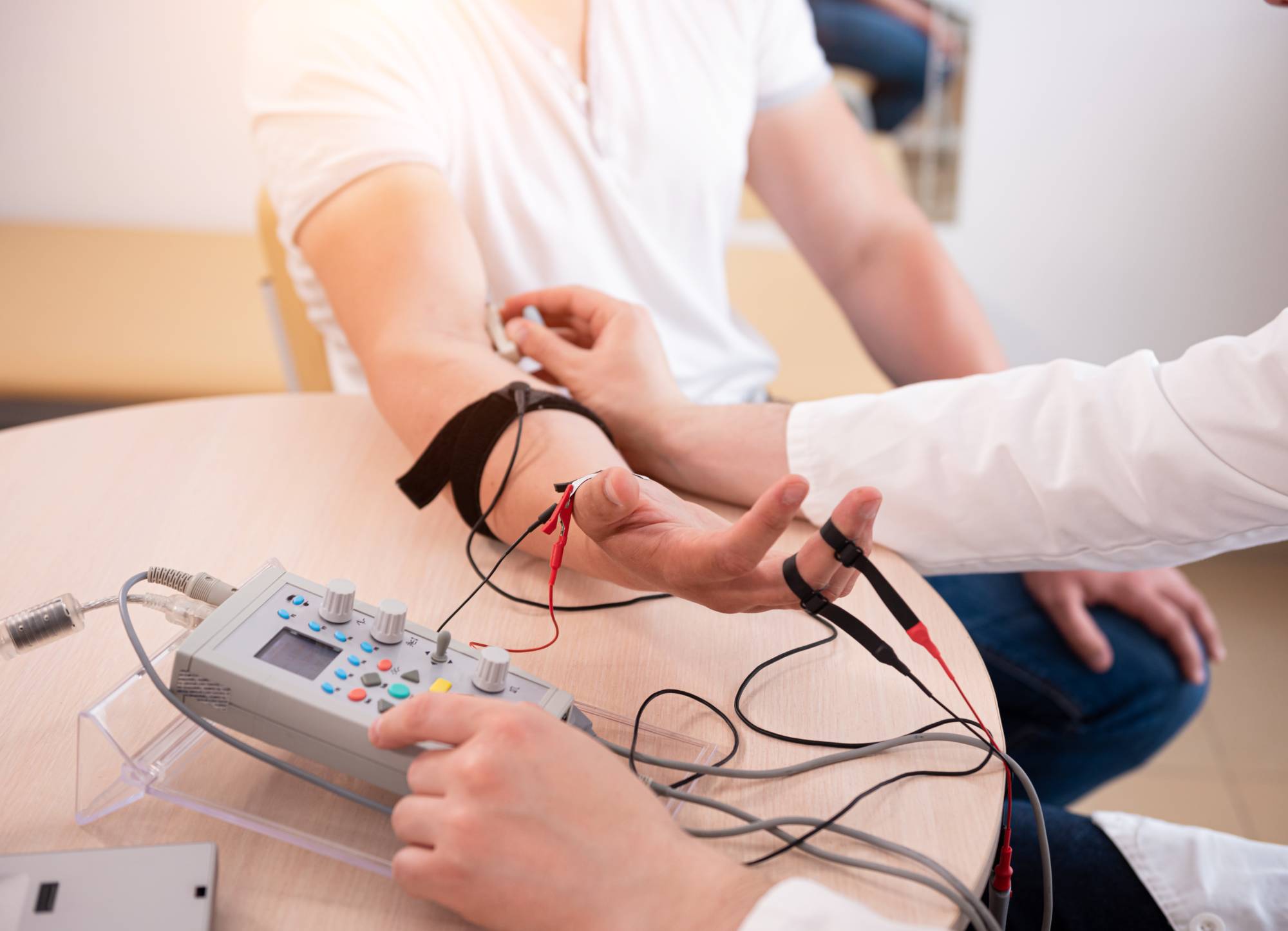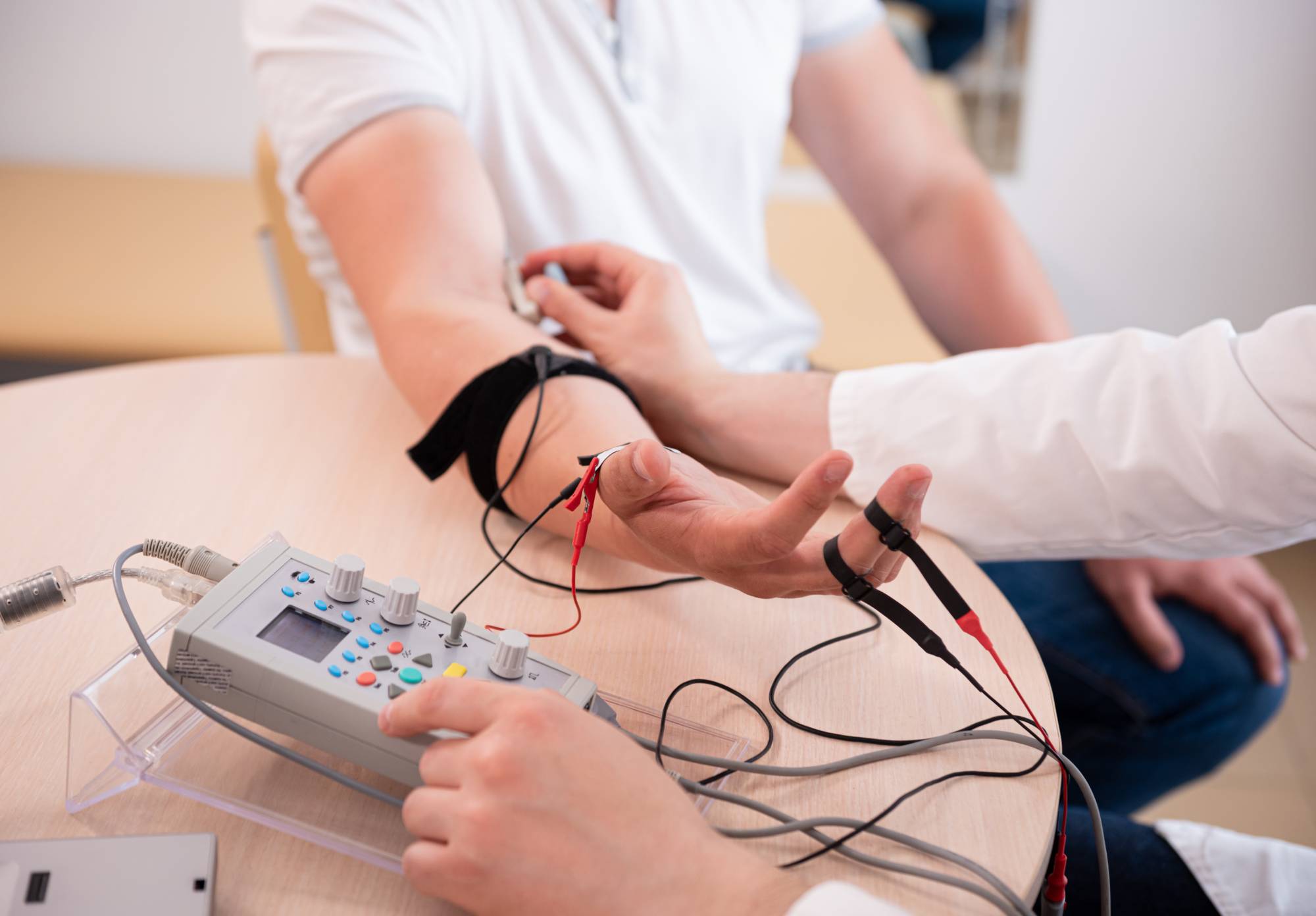Advanced electromyography testing that pinpoints exactly what’s causing your symptoms, so you can finally move forward with the right treatment.

Reviews

You’ve been dealing with numbness, tingling, or muscle weakness for weeks or months. Maybe you’ve had blood tests, X-rays, even MRIs that didn’t show anything definitive. You’re tired of hearing “let’s wait and see” when your symptoms are affecting your work, your sleep, and your daily life.
EMG testing changes that. This diagnostic procedure measures the electrical activity in your muscles and nerves, giving us precise information about where the problem is and how severe it might be. Instead of guessing, we get real data.
When you leave our office, you’ll know whether you’re dealing with carpal tunnel syndrome, a pinched nerve, peripheral neuropathy, or something else entirely. More importantly, you’ll have a clear path forward for treatment that actually addresses the root cause of your symptoms.
We at NY Spine Medicine have been helping patients in Scotch Plains and throughout New Jersey get accurate diagnoses for their nerve and muscle conditions. Our board-certified physicians specialize in spine and nerve disorders, and we’ve performed thousands of EMG tests over the years.
We know how frustrating it can be when you’re in pain but don’t have clear answers. That’s why we focus on thorough testing and clear communication. You won’t leave our office wondering what the results mean or what happens next.
We work closely with your referring physician to make sure everyone’s on the same page about your diagnosis and treatment plan.

EMG testing has two parts: nerve conduction studies and electromyography. We start with the nerve conduction study, where we place small electrodes on your skin and send mild electrical pulses to measure how fast and strong your nerve signals are. This tells us if your nerves are working properly.
Next comes the electromyography portion. We insert a thin needle electrode into specific muscles to measure their electrical activity both at rest and when you contract them. This shows us whether your muscles are getting proper signals from your nerves.
The entire process typically takes 30 to 60 minutes, depending on which areas we’re testing. Yes, there’s some discomfort, but most patients find it very tolerable. We explain everything as we go, and you can ask questions throughout the test. You’ll get your results immediately, along with a clear explanation of what they mean for your condition and treatment options.

Ready to get started?
Our EMG testing evaluates both motor and sensory nerve function throughout your body. We can test everything from suspected carpal tunnel syndrome in your wrists to sciatica affecting your legs. The test identifies exactly which nerves or muscles aren’t functioning normally and measures the severity of the problem.
We use state-of-the-art electromyography equipment that provides precise measurements while minimizing patient discomfort. Our physicians have extensive experience interpreting EMG results for conditions like peripheral neuropathy, radiculopathy, muscle disorders, and nerve entrapment syndromes.
After your test, we provide a detailed report to your referring physician and discuss treatment recommendations with you. Whether you need physical therapy, medication, injections, or other interventions, you’ll leave with a clear understanding of your next steps. We also coordinate with other specialists when needed to ensure you get comprehensive care for your specific condition.

New York:
Florida:
Support